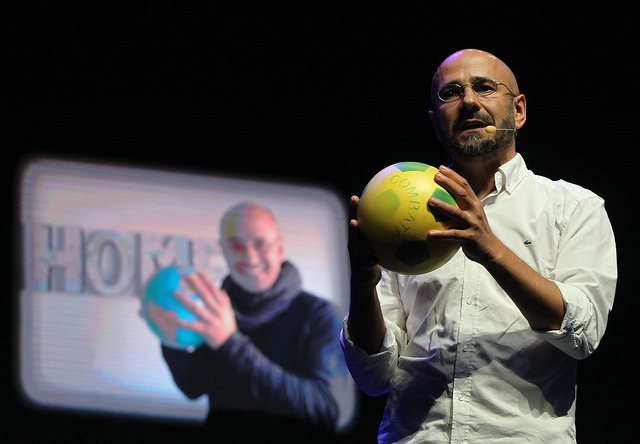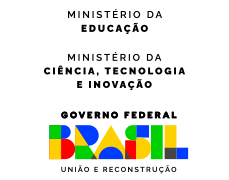Rogério Martins: 'Why can't we see beyond three dimensions?'

If we live in a three-dimensional world, how can we begin to comprehend the 4th dimension? This was the question posed to a crowded plenary hall this afternoon by Rogério Martins – a Portuguese mathematician, teacher, and host of the successful TV show ‘This is Mathematics’.
Martins was invited to participate in a cycle of public lectures offered by the Brazilian Institute of Pure and Applied Mathematics (IMPA) and the Serrapilheira Institute, and spoke to an audience largely comprised of talented young high schools students – many of whom participated in the 2017 Brazilian Mathematics Olympiad for Public Schools (OBMEP), the largest school competition in the world. The TV presenter made fascinating parallels to stimulate the many minds in the audience, encouraging all present to aim for a closer comprehension of higher dimensions. “I hope that you leave this talk not with answers, but many more questions,” he prompted.
Read more: Williamson: ‘Semi-simplicity is like the air we breathe’
Hossein Behforooz: If math is not fun, what’s the point?
Kashiwara demystifies crystal bases & categorifications
He used the example of a sphere, a mathematical object where all points are equidistant from the center point. The three-dimensional sphere has three coordinates. In three dimensions, one can not only go up and down but also side to side. Technically, spheres exist in 1 and 2 dimensions. In 2D, it is better known as a circle. And in 1D, two points on a line are equally distant from the center point – an unconventional idea of a sphere.

However odd, these concepts are tangible and visible in the 3-dimensional world. “Normally, we use our physical intuition to understand concepts,” Martins posits. “But what about 4 dimensions?” A 4-dimensional sphere is nothing less than a sphere with 4 coordinates, all equidistant from the center point. The points are identifiable in space but are abstract. Mathematically, it is just as viable as any other number of dimensions, he said. But, there is a visualization problem. He proposed a series of exercises to test the imagination and ability to comprehend the intangible.
Martins drew a parallel with the ability to receive color. From an early age, children are taught that there are three primary colors from which all others are comprised. But, this can be considered a fallacy. Most humans are trichromatic, meaning the eye has three types of photoreceptor cone cells, that are computed by the brain – blue, green, and red. However, he said, the spectrum of color is a space with infinite dimensions, and there are many more colors than those humans can see. Some people have only two types of photoreceptors, a condition known as color blindness. In rare cases, a person has only one type and perceives the world as a gradient of only one color. Pigeons are pentachromatic – they have five different types of cone cells. “Can we imagine what that could look like?” the teacher asked.

“Through history, we have turned to mathematics to understand the physical world. Now, we are using the physical world to understand math,” Martins said, giving the audience a final exercise. “What if we were made of two separate parts, controlled by one brain?” Imagine the lower body and legs walking around while the upper torso reads a book elsewhere. Now, imagine plotting this scenario on a graph – from a math point of view, there would be 6 dimensions. Visualize this concept is a step closer to understanding the 6th dimension.


